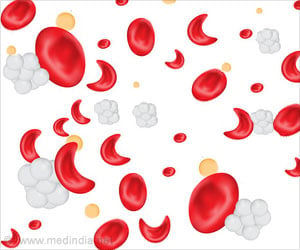A new study has provided unexpected insight into a human immune response that is responsible for the failure of bone marrow transplant.

‘On studying the X-ray crystal structure of the lethal factor present in stonefish venom, researchers have provided unexpected insight into a crucial human immune response that is responsible for the failure of bone marrow transplant therapies for treating leukemia.’





The work, published in Proceedings of the National Academy of Sciences of the United States of America, reveals that the lethal component of stonefish venom, a protein called Stonustoxin, is an ancient relative of the human immune protein perforin. In humans, perforin is an essential weapon unleashed to destroy virally infected and cancerous cells. Perforin proteins attach themselves to a diseased cell and assemble to form giant ring shaped holes, or pores, on the cell surface. Each pore contains around 20 perforin proteins that stick together in a symmetrical fashion. The pores are big enough to allow toxins to enter the cell, killing it from within. How these pores form is a mystery but the work on stonustoxin has revealed a key part of the pore assembly mechanism.
To make their discovery, the team used powerful synchrotron radiation to visualise the atomic structure of stonustoxin. Crucially, they found that the toxin contains two perforin-like proteins stuck together. By seeing how two of the proteins first interact, the researchers can build on this to understand how the full assembly of 20 perforin molecules forms a complete pore.
Unravelling the structure of the stonefish's lethal toxin was carried out at Monash University and the ARC Centre of Excellence in Advanced Molecular Imaging. The leading authors of the study were Dr Andrew Ellisdon, Dr Sheena McGowan and Professor James Whisstock.
Co-lead author Dr Sheena McGowan said, "The lethal factor in stonefish venom is like a loaded gun - ready to fire as soon as it is injected into the foot of an unsuspecting victim."
Advertisement
An international group of researchers, led by the Peter MacCallum Cancer Institute and including Monash based Professor Whisstock and his team, are working to develop perforin inhibitors.
Advertisement
Source-Eurekalert















